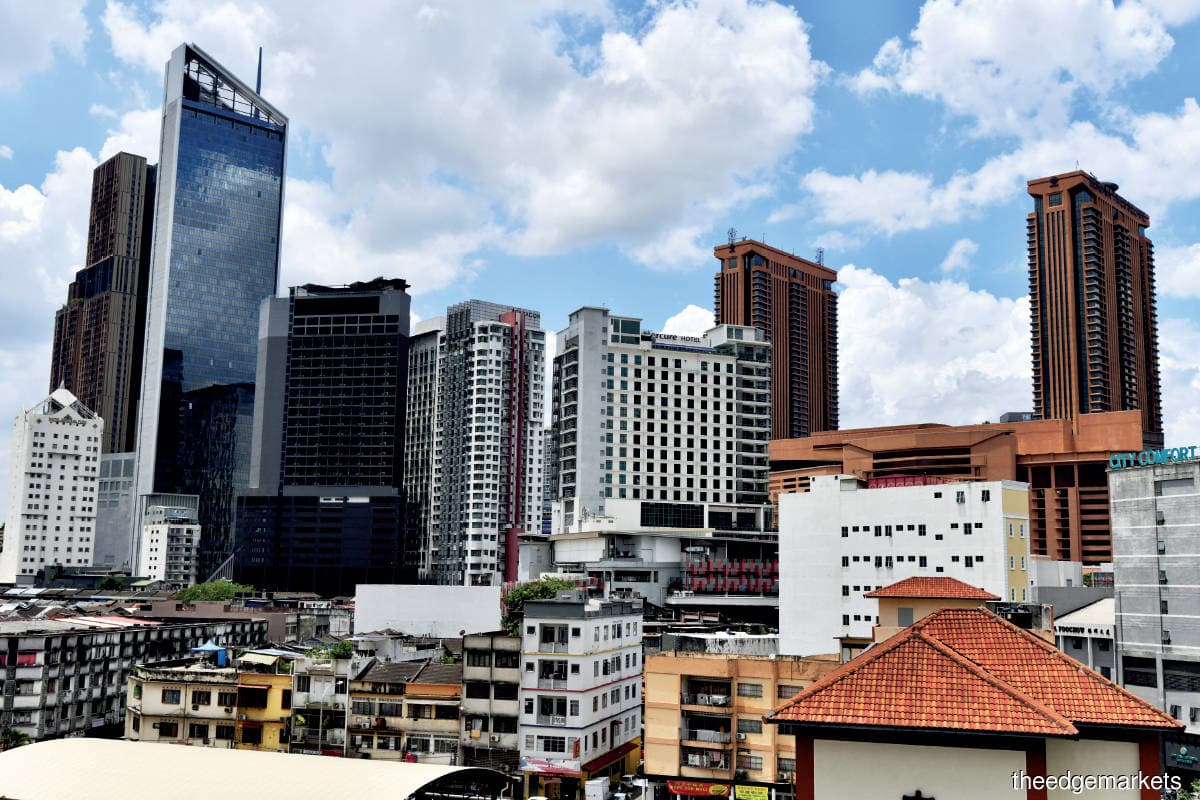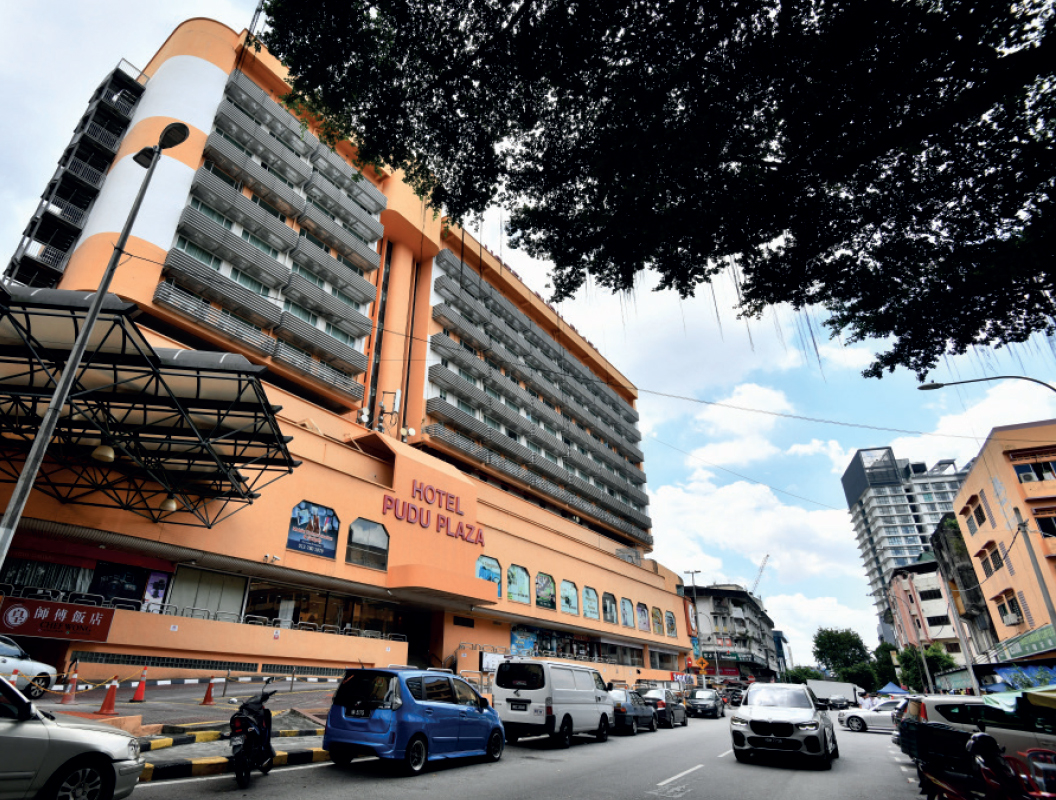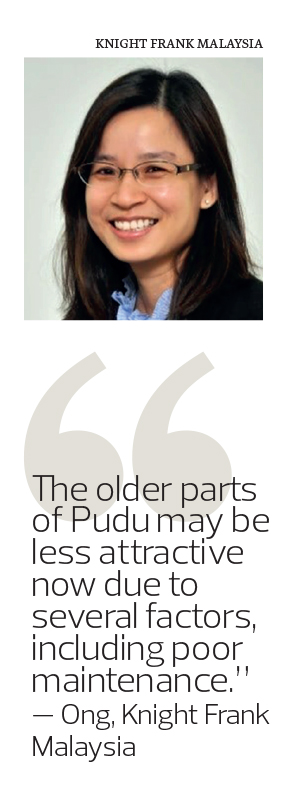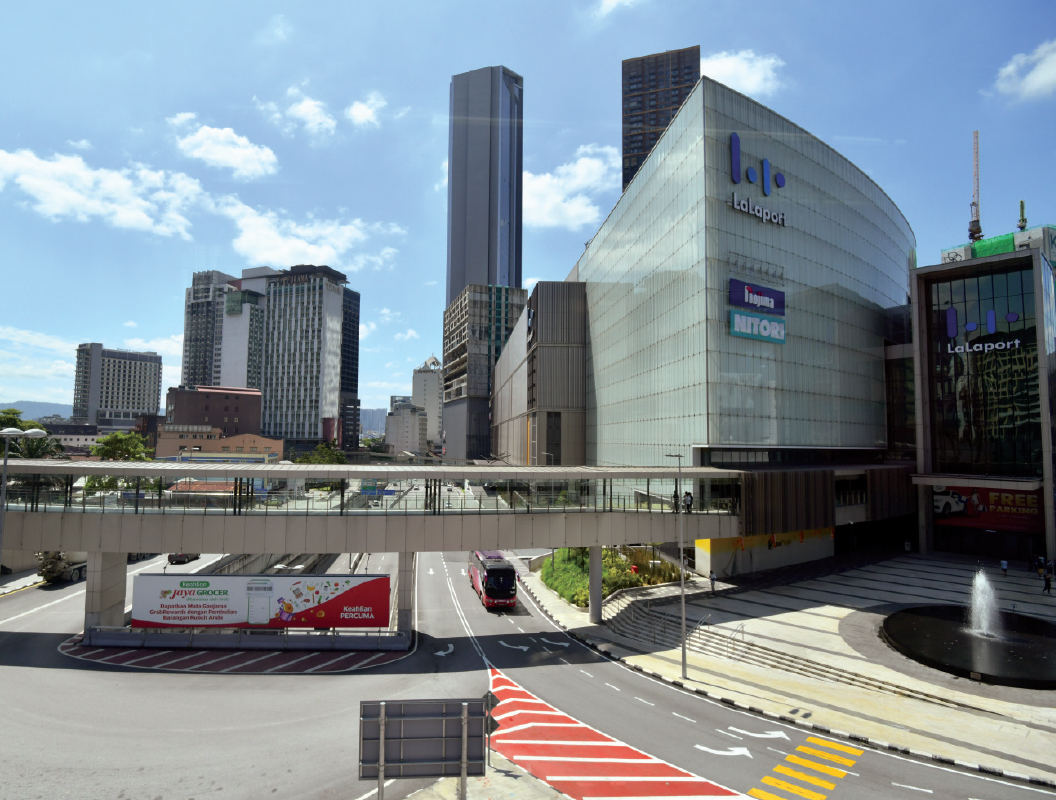
This article first appeared in City & Country, The Edge Malaysia Weekly on March 20, 2023 - March 26, 2023
Known as one of the oldest areas in Kuala Lumpur, Pudu has witnessed tremendous changes, especially in the past few decades. Based on City & Country’s observation during a recent visit, nearly half of the area has modern skyscrapers while the other half comprises ageing pre- and post-war shophouses that have served generations of consumers.
“Pudu used to be very chaotic, it was constantly packed. Traffic congestion was an issue and the air pollution was terrible as well. But that didn’t stop people from coming to the area, so it always had this hustle-and-bustle feeling,” says Jayna, a frequent visitor of the area.
Previously a mining and brick manufacturing district, Pudu’s origins can be traced back to the 1800s. According to Rahim & Co International Sdn Bhd director of research Sulaiman Saheh, the British set up brick manufacturing factories in the area in the 1880s and built the now-demolished Pudu Jail in 1891, after industrial activities in the area were halted.
Over the years, Pudu has established itself as a prominent residential and commercial district. Today, a large portion of it comes under the Bukit Bintang parliamentary constituency, while the rest of the area is under the Cheras parliamentary constituency.
In addition to being connected by highways and road networks such as the Kuala Lumpur-Putrajaya Expressway (MEX), Jalan Sungai Besi and Jalan Tun Razak, Pudu is within easy reach of public transport hubs like the Hang Tuah LRT-monorail interchange station, Pudu LRT station and Pudu Sentral (formerly known as Puduraya).
The traffic conditions are pretty much the same as before, says Jayna. “There used to be a traffic light at the junction between the current Bukit Bintang City Centre (BBCC) and Berjaya Times Square but it’s not there anymore, so the traffic flow is faster in that spot compared to perhaps five to 10 years ago. The main traffic often came from the Sungei Wang side and I think it’s still the same.”
Getting around Pudu
The northern part of Pudu includes Pudu Plaza and Jalan Pasar, which borders the Bukit Bintang area, Berjaya Times Square and the Tun Razak Exchange (TRX) development. To the west are Jalan Imbi and Jalan Hang Tuah, which are next to the areas surrounding Stadium Merdeka and Stadium Negara.
The eastern part of Pudu comprises the Taman Maluri and Taman Miharja areas, which are along the MEX, while to the south are Sungai Besi and Chinese cemetery grounds.
Rahim and Co’s Sulaiman says, “From a layman’s perspective, the boundaries of Pudu have become blurred over the years, and somewhat receded with the naming and branding of some of the newer developments in the area, as many prefer to use a name that is more synonymous with commercial and tourist vibrancy and lean away from the stigma of Pudu Jail.”
Some of the older landmarks include Pudu Sentral, Pasar Besar Pudu, Hotel Pudu Plaza and Kenanga Wholesale City mall. Most of the commercial activities offered here are in pre- and post-war shophouses and individual lots.
With the evolution of Pudu, the area can be divided into three distinctive parts, says Sulaiman. There is the core area of Pudu, anchored by areas along Jalan Pudu, Jalan Pasar, Jalan Yew, Jalan San Peng and Jalan Loke Yew; the former Pudu Jail site, which has been redeveloped into BBCC; and neighbouring areas in the vicinity.
In this article, the focus is on commercial developments to the northwest, northeast and east of Pudu, from Jalan Hang Tuah to Jalan Yew, which is along southbound Jalan Pudu. This part of Pudu includes inner lanes such as Jalan Nyonya, Jalan Brunei, Jalan Kancil, Jalan Sayur, Jalan Landak, Jalan Pasar Baharu and Jalan Seladang.
The types of commercial property in this part of Pudu include pre- and post-war shophouses, retail malls and hotels. There is a good mix of businesses, such as F&B outlets, budget hotels, sundry shops and those dealing in electrical and electronics products, printing, textiles, hardware and fishing equipment.
Having frequented the area for about 20 years, Jayna says an attractive part of Pudu is its wide offering of niche businesses, some of which have ceased operations over the years. “There are a lot of printing shops along Jalan Pudu and the intersection of Jalan Nyonya and Jalan Brunei. There is also a shop that fixes luggage wheels and a shop that specialises in sharpening knives.
“There are a few pawn shops along this stretch as well and they’re quite centralised here. People also come here to get their gas stoves repaired and cleaned. It is mostly the older generation who runs these shops. In most cases, people won’t be able to find individually-owned shops like these anymore. You would have to go to malls for these kinds of services.”
Besides offering niche services, the older part of Pudu is a popular gastronomical hotspot. Chinese eateries that have existed for generations can be found in the inner lanes of the area, such as Chun Kei Tai Bu Noodle Restaurant and Restoran Siak Kee in Jalan Sayur, Jia Xiang Steam Fish Head Restaurant in Jalan Gajah, Restoran Wong Mei Kee and Restoran Pudu Utama in Jalan Nyonya, as well as hawker centres such as ICC Pudu and Pudu Wai Sek Kai.
“Most of these restaurants and stalls operate in the evening and at night. There used to be a lot of stalls by the roadside. I think they have moved to shoplots or have shut down. A lot of these restaurants are now run by foreign workers. The area is not as happening as it was five to 10 years ago,” says Jayna.
“I’ve been eating Chun Kei Tai Bu’s Hakka noodles for as long as I can remember and have noticed that it has become less salty in the last couple of years. I think people are more health-conscious nowadays and the owners are catering to that.”
Established in 1953, Sek Yuen Restaurant is another crowd favourite among locals and tourists. This place serves traditional Cantonese dishes, including its signature roast duck, cold jelly chicken and handmade crab balls. After operating for years, it managed to extend the restaurant to the ground floor of an adjacent shophouse due to high demand.
This part of Pudu is also popular for its hotels, which include Furama Bukit Bintang, Eco Hotel @ Bukit Bintang, Hotel Venice, Hotel Sentral Pudu and Hotel Pudu Plaza, which is integrated with the Pudu Plaza shopping complex.
On the flip side, Wan Shamsul, a resident and fresh produce vendor at Pasar Pudu, says: “I’ve been selling vegetables here for over 20 years. Although business here is as good as [pre-pandemic] levels, there are a number of unoccupied shophouses in the inner lanes due to the pandemic. The business owners were unable to pay rent and keep their operations running as they had no business at all. Eventually, some of them moved to places with cheaper rents while others stopped operations altogether.”
Knight Frank (Malaysia) Sdn Bhd senior executive director of research and consultancy Judy Ong says the empty shops in the older parts of Pudu “may be less attractive now due to factors such as old and dated properties that have not been well maintained, less diversity in the trade/tenant mix compared to shopping centres, changes in shoppers’ habits (growing popularity of online shopping), inadequate kerbside parking and high rents.”
Price trends and values
Meanwhile, it appears that property values and yields in Pudu have remained stable over the years and are on an upward trend. According to Sulaiman, in 2022, two- and three-storey pre-war shophouses along Jalan Pudu, with built-ups from 2,396 to 4,800 sq ft, were transacted for RM3.3 million to RM5.1 million. For comparison, the shophouses had a median transacted price of RM3.5 million in 2019.
The median transacted price for these shophouses in 2011 was between RM1.4 million and RM1.9 million. “Price appreciation for pre-war shophouses are higher along the main frontage roads (Jalan Pudu) of up to a compound annual growth rate (CAGR) of 8.7% over the past 10 years, while it is between 5.3% and 6.7% in the internal areas,” he says.
In terms of the asking rents in 2022, shophouses along Jalan Pudu measuring 2,400 to 3,800 sq ft were looking to fetch monthly rents of between RM4,000 and RM7,000, with yields ranging from 1.4% to 2.4%. Sulaiman says larger shophouses along Jalan Pudu and Jalan Pasar command rents of between RM5,000 and RM10,000 per month. In 2019, these shophouses had asking rents of RM2,500 to RM4,000 a month.
“This upward price trend for the Jalan Pudu frontage shops might be due to easy access to roads and public transport. The newer redevelopment projects may also have a positive impact on the transacted prices [and] rents of shophouses along the main roads but not much for the shophouses along the inner lanes,” says Sulaiman.
In Jalan Landak, the retail lots in the three-storey Pudu Plaza shopping complex are mostly for rent on a long-term basis, with rents from about RM3.15 psf for units starting from 308 sq ft, says Knight Frank Malaysia’s Ong.
In terms of occupancy rates for shophouses in Jalan Pudu and Jalan Brunei, Sulaiman says, “Occupancy is encouraging, especially for the ground floor lots, as they are facing the main roads and have immediate access to vehicle and pedestrian traffic.
“Value appreciation — while expected, thanks to the newer developments setting a new price benchmark in the surrounding areas — depends on the condition of the properties, as neglect and deterioration of the outdated environment and buildings will hinder potential appreciation. This could result in pockets of slums or decay amid several new development spots.”
Redevelopment efforts
Sulaiman notes that there are not many new developments in the core area of Pudu as it is mostly developed with shophouses, buildings, residences and public amenities.
However, there have been some new completions in Jalan Pudu with the BBCC, which is an ongoing 19.4-acre mixed-use development comprising residential, office, retail and hotel components, as well as an entertainment hub. BBCC is considered a transit-oriented development because it is a three-minute walk from the Hang Tuah LRT station via a linking pedestrian bridge.
The site on which BBCC is situated has a deep history. Built between 1891 and 1895 by the British colonial government, Pudu Jail operated for 101 years before it was shut down in 1996. After that, in 2009, the Malaysian government decided to have the building demolished to make way for redevelopment.
The BBCC integrated development is being jointly developed by UDA Holdings Bhd, Eco World Development Group Bhd and the Employees Provident Fund. Components in the first phase that have been completed include Lucentia Residences 1 and 2, The Stride Strata Office, Mitsui Shopping Park LaLaport BBCC, an entertainment hub comprising the Zepp Kuala Lumpur concert hall and Malaysia Grand Bazaar, which is an arts and culture retail centre.
According to Knight Frank Malaysia’s Ong, Lalaport has an occupancy rate of about 80% while Lucentia Residences has achieved a take-up rate of 95%.
She adds that TSLAW Land Holdings Sdn Bhd is developing a high-rise project in the core area of Pudu. Named Skyline KL, this apartment suite development will comprise four towers, with units ranging from 480 to 1,080 sq ft and prices starting from RM369,000. Located along Jalan San Peng and right behind the Pudu LRT Station, Skyline KL will be directly connected to the station upon completion in 2026.
Ongoing and upcoming developments in the area include SWNK Houze, comprising residential suites and other high-rise residential projects, office towers and hotels, which are part of the BBCC development.
Changing landscape
Pudu resident Shamsul says Pudu did see some changes after the new developments were opened to the public. “When Pudu Jail was demolished, business owners here were very happy because the jail [had a dark past] and we didn’t want customers avoiding the area.
“The new developments have brought in the younger generations, but they still prefer to go to the malls to buy groceries rather than the market. It does cause more traffic congestion but they don’t steal the parking lots because there is basement parking at LaLaport. Our customers are mostly people who have lived [in and around] Pudu for a very long time.”
Today, Pudu is occupied by more foreign workers, says the 56-year-old vendor. “I see more foreigners in the market, but it doesn’t affect me much. [However,] I have seen some locals who avoid buying from them as they are afraid the quality is not good. If my generation of vendors leave, I’m afraid half of Pasar Pudu might be occupied with foreigners.”
Sulaiman opines that the recent completion of BBCC’s first phase has brought renewed interest to the area. “With Pudu having remained primarily as a mature area, some say its outlook has stayed muted in the past decade due to other newer areas gaining more recognition and traction from the general public.
“In contrast to the shorter heights of Pudu’s existing commercial properties, BBCC does indeed tower over the rest in its grandeur and scale. As the name ‘Pudu’ is generally associated with the older developments of the area, including the famous demolished prison, it brings to mind a picture of datedness, history and, to some extent, decay,” he says.
“This is opposed to the more popular and lively name of Bukit Bintang, its next-door neighbour, and hence having chosen its name BBCC, hinging on the pre-established and thriving shopping and entertainment scene. This, however, raises the question of how long the Pudu name and its perceived borders will be preserved as it faces encroachment from its more popular neighbours such as the TRX, Bukit Bintang and Kuala Lumpur city centre.”
However, in his mid- to long-term view, Sulaiman believes Pudu will benefit from the newer developments bringing in new traffic and interest to the local scene. He also thinks the key drivers are its public transport system, road networks and pedestrian pathways.
“To further attract people to the area, there has to be an improved pedestrian and interconnecting system implemented in the roads and lanes of Pudu. This would make it a more walkable city, while benefiting the area’s old and new commercial developments,” he says.
Save by subscribing to us for your print and/or digital copy.
P/S: The Edge is also available on Apple's App Store and Android's Google Play.






